Have you ever played with Silly Putty?
Crayola
Viscoelastic Materials
and the
Class V Dental Restoration
What is a viscoelastic material?
Have you ever played with Silly Putty?
Crayola
Silly putty is a perfect example of a viscoelastic material. It can strrrrrrretchhhhh long before it breaks, go back to its original shape, and even bounce!
Viscoelasticity is a physical property of all materials, although some are more viscoelastic than others.

Concrete is one example where we don't want much viscoelasticity. What happens when concrete doesn't hold its shape over time?
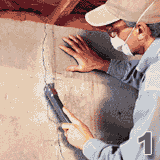
Why do old wooden barns sag over time?
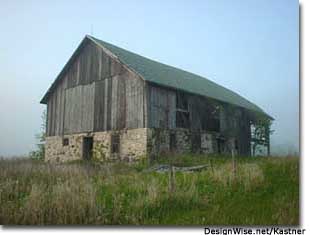
Why is the average person 1 cm taller in the morning than in the evening?
Exploration I
Observing Viscoelastic Materials
Activity 1: Another reason why not to smoke
Gently pinch the skin on the back of your hand and lift up for a few seconds. Release the skin and describe what you see:
Skin is a viscoelastic material. In a healthy young person, the skin snaps back in less than 1 sec but in older people and people who smoke, the stretched skin may take up to several minutes to return to its normal position.
Activity 2: Don't be silly
Take the Silly Putty out of the package and form it into a long rod. Arrange it so that part of the rod lies on a table near the edge. Support the end by placing a book or other object on the Silly Putty so that it doesn't drop to the floor. Allow the rest of the rod to hang over the edge of the table. Describe what happens to the Silly Putty over time. What do you think would happen if the Silly Putty was chilled? Now, roll the Silly Putty into a ball and bounce it on the floor. Write your answers below:
Activity 3: Can you hear me?
Remove the disposable foam earplugs from the package and place them in your ears according to the manufacturer's directions. Describe what you felt in your fingers and in your ears while placing the plugs:
Foam earplugs were designed to make use of the controlled viscoelastic behavior of the polymer material from which it is made. Once placed in the ear canal, the foam gradually expands as a result of viscoelastic recovery until it fills the space and effectively blocks out the noise.
Concept Introduction:
Some Physical Properties of Materials
So, what's
happening? 
First, we need to understand what happens to a material when a force is applied to it. A few short equations will help.
Stress s = F/A “force applied per unit area”
Strain e = DL/L0 “response to the stress; change in length per unit original length"
When we plot stress against strain, there is a unique constant of proportionality between the two variables for any given material, and that constant is known as Young's modulus or modulus of elasticity:
Modulus of elasticity E = stress/strain = s /e
The graph looks like this:
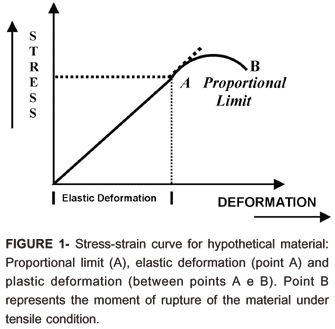
E can be thought of as the stiffness of a material. Sometimes it is more convenient to think in terms of the reciprocal of E, which is the flexibility of a material:
1/E = e/s
See another explanation of modulus of elasticity.
So, how far can we stretch a material before it will permanently change or break?
For a material to have "elasticity", it must return to its original dimensions (zero strain) after a temporary stress has been removed. Under those conditions, the material is said to be still in the elastic range. Look at the graph above and notice where the straight line begins to curve.
Now, if you stress the material beyond its elastic limit, the atoms in the material cannot return to their original positions, and the material is said to enter into the plastic range. See the following graph for a representation of the elastic and plastic ranges.
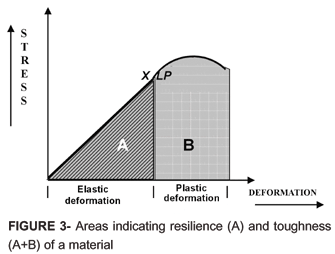
Eventually, if you continue to stress the material beyond its capacity to withstand the forces, it will break apart. On the graph, that is the point where the curve ends.
For viscoelastic materials, the relationship between stress and strain depends on time and temperature (think of your Silly Putty experiment).
There are some unique and defining qualities of a viscoelastic material. Here are just a few:
If the stress is held constant, the strain increases with time (this phenomenon is called "creep". Again, think back to your Silly Putty experiment.
If the strain is held constant, the stress decreases with time (this is called "relaxation")
The stiffness depends on the rate that the load is applied (slow stretching can be accommodated better)
For another explanation of viscoelastic properties, see: Dow Chemical Web site
How are viscoelastic materials tested?
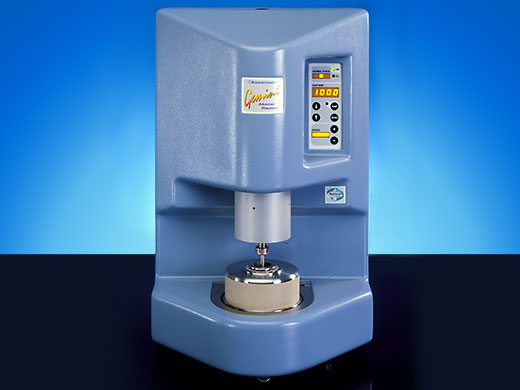
Materials are placed in a machine that looks like this. Force is applied and the material is measured.
Let's test some materials...
Exploration II:
Materials Testing
The following is a simulated lab exercise in which various materials will be tested to determine the elastic modulus (E) for each material. Since it is a simulation, the data will be provided for you. Enter the data into the spreadsheet and evaluate the stress/strain curve that is generated for each material. Then, answer the questions at the end of the section.
 This section currently under
construction...
This section currently under
construction...
Question #1 Which material is the most brittle?
Question #2 Which material is the most flexible?
Question #3 Which dental material is the most brittle?
Clinical Application
The Class V Restoration
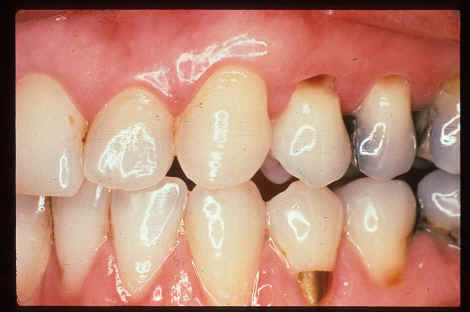
Question #4 Describe the location of a Class V restoration and possible indications for its use:
Question #5 Describe the forces that act directly and indirectly in the Class V region: ?
Hint:
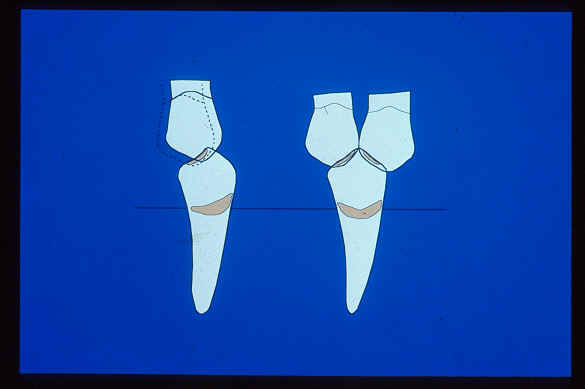
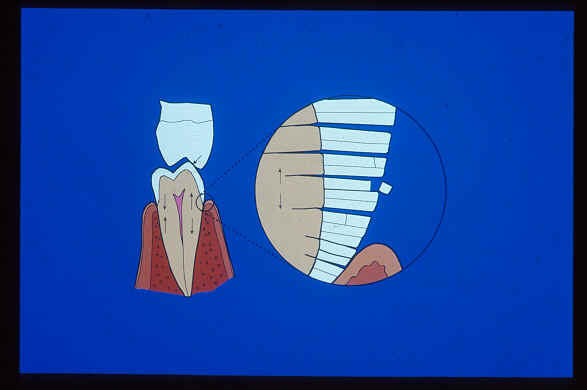
Question #6 Considering the forces that are involved in the Class V region, and based upon your understanding of viscoelastic materials, which dental material would be suitable for most Class V restorations ?